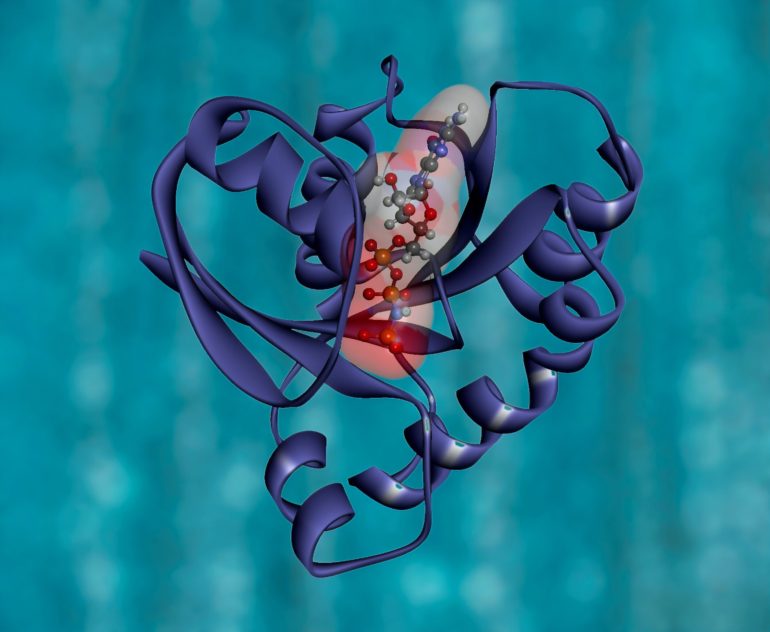For more than a decade, scientists studying epigenetics have used a powerful method called ChIP-seq to map changes in proteins and other critical regulatory factors across the genome. While ChIP-seq provides invaluable insights into the underpinnings of health and disease, it also faces a frustrating challenge: its results are often viewed as qualitative rather than quantitative, making interpretation difficult.
But, it turns out, ChIP-seq may have been quantitative all along, according to a recent report selected as an Editors’ Pick by and featured on the cover of the Journal of Biological Chemistry.
“ChIP-seq is the backbone of epigenetics research. Our findings challenge the belief that additional steps are required to make it quantitative,” said Brad Dickson, Ph.D., a staff scientist at Van Andel Institute and the study’s corresponding author. “Our new approach provides a way to quantify results, thereby making ChIP-seq more precise, while leaving standard protocols untouched.”
Previous attempts to quantify ChIP-seq results have led to additional steps being added to the protocol, including the use of “spike-ins,” which are additives designed to normalize ChIP-seq results and reveal histone changes that otherwise may be obscured. These extra steps increase the complexity of experiments while also adding variables that could interfere with reproducibility. Importantly, the study also identifies a sensitivity issue in spike-in normalization that has not previously been discussed.
Using a predictive physical model, Dickson and his colleagues developed a novel approach called the sans-spike-in method for Quantitative ChIP-sequencing, or siQ-ChIP. It allows researchers to follow the standard ChIP-seq protocol, eliminating the need for spike-ins, and also outlines a set of common measurements that should be reported for all ChIP-seq experiments to ensure reproducibility as well as quantification.
By leveraging the binding reaction at the immunoprecipitation step, siQ-ChIP defines a physical scale for sequencing results that allows comparison between experiments. The quantitative scale is based on the binding isotherm of the immunoprecipitation products.
FloChiP, a new tool optimizing gene-regulation studies
More information:
Bradley M. Dickson et al, A physical basis for quantitative ChIP-sequencing, Journal of Biological Chemistry (2020). DOI: 10.1074/jbc.RA120.015353
Provided by
Van Andel Research Institute
Citation:
After more than a decade, ChIP-seq may be quantitative after all (2020, November 20)
retrieved 20 November 2020
from https://phys.org/news/2020-11-decade-chip-seq-quantitative.html
This document is subject to copyright. Apart from any fair dealing for the purpose of private study or research, no
part may be reproduced without the written permission. The content is provided for information purposes only.



